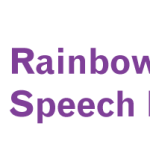ADHD-THE SUPER POWERED BRAIN
You may have heard of ADHD or ADD and have some preconceived ideas about what it looks like. Most people picture a very hyperactive little boy bouncing off the walls. Some people even think it’s not a ‘real’ condition and is just a child who needs less sugar and more discipline. But ADHD is a very real and complex neurological condition that affects 10% of the world’s population- both boys, girls and adults too.
 Causes of ADHD:
Causes of ADHD:
Genetics- there are 16 genes that contribute to the diagnosis
Traumatic brain injuries- particularly the temporal and frontal lobe
Complications during birth
Not caused by:
Parents– but they can help reduce negative symptoms and challenges
Too much sugar- the sugar high myth has been de-bunked in the literature. Artificial food additives and colourings can however exacerbate ADHD. A healthy diet rich in Omega 3s has been proven to help too.
ADHD stands for Attention Deficit Hyperactivity Disorder. Many ADHDers dislike that acronym though. Some would actually describe ADHD not as an ‘attention deficit’ but instead ‘attention difference’ as many people with ADHD can be very hyper focussed and actually have trouble switching attention. Others describe their experience of ADHD more of an executive function disorder- having difficulties with organisation skills, memory and time management. Physical hyperactivity is also not a pre-requisite of ADHD- more brain hyperactivity. Girls and women with ADHD are often underdiagnosed as they have more internal struggles than the obvious hyperactive presentation.
Types of ADHD according to Dr Daniel Amen:
• Classic ADHD – Inattentiveness, distractibility, hyperactivity, impulsivity & disorganisation.
• Inattentive ADHD – Short attention span, distractibility, disorganisation, procrastination.
• Over-focused ADHD – Core ADHD symptoms plus great trouble shifting attention, can easily get locked into negative thoughts or behaviours.
• Anxious ADHD – Anxiety, extreme tension, frequent headaches and stomach aches, predict the worst, fear of being judged
• Temporal Lobe ADHD – Core ADHD symptoms plus Temporal Lobe Symptoms i.e., memory, learning, mood stability, anger and aggression.
• Limbic ADHD – Moodiness, low energy, frequent feelings of helplessness, guilt, chronic low self-esteem.
• Ring of Fire ADHD – Sensory sensitivity to noise, light or touch, unpredictable behaviour, fast talking, on a brain scan it looks like a ring of hyperactivity around the brain.
If you think your child may have ADHD then the first step is to see a paediatrician. If you think you may have ADHD then you can get a diagnosis as an adult by seeing a psychiatrist. They can talk to you about treatment options which usually include medication and therapy. A speech pathologist can help children with ADHD who may have difficulties with language, literacy and social skills as a result of ADHD. Many people with ADHD who were diagnosed as adults describe how they felt their life was a struggle and they didn’t know why- particularly schooling. There is a strong link with ADHD and poor self esteem- children with ADHD receive up to 20,000 more negative comments by the age of 12 than their neurotypical peers. If diagnosed and treated early (usually age 5 or 6) people with ADHD can lead happy and successful lives. Having ADHD that is well managed can actually be really positive. People with ADHD are often social and outgoing, think outside the box, more willing to take risks and jump at new opportunities. Some very famous elite athletes, actors and musicians have described how ADHD helped them get where they are today: Olympic swimmer Michael Phelps, Maroon 5 singer Adam Levine and Olympic gymnast Simone Biles. ADHD can be a superpower if channelled in the right direction.
Written by Calla Dolton – Speech Pathologist


